Nicholas Dimbleby - A brief history

Frankenstein
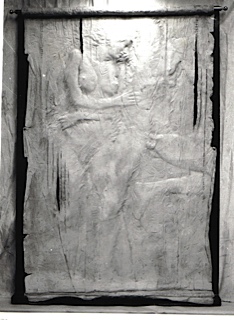
Relic
The origins of my sculpture derive from a variety of sources; the self-motivated, the private commission from a client for a particular site and the public competition. All these give rise to figurative pieces based on modelling from natural forms.
I began studying figurative sculpture at Edinburgh College Art in 1968, followed by a more abstract period at both Goldsmith’s and Central St Martin’s where I took my degree in Fine Art. Soon after, while working as assistant to William Pye, I returned to making pieces derived from the figure where my instincts more truly lay.
My sculpture is modelled in clay, from which a mould is made and then cast into bronze or a variety of resin and fibreglass materials, depending on the nature of the image and the setting.
All art is a deception to a lesser or greater degree: for example, a shallow relief such as ‘Relic’ was conceived to deceive in that it depicts a sheet, hanging from a brass rail, on which the image of lovers has been impressed. The work that appears to be carved from stone is in fact modelled in clay and cast into stone, using two contrasting stone-dust, resin and fibreglass materials. From the mould, three subsequent casts were made.
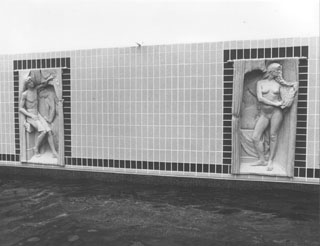
Swimming Pool Reliefs
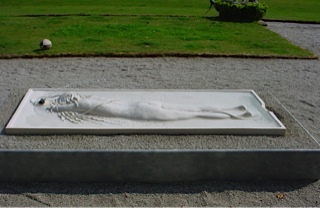
Afternoon
Sculptures such as ‘Afternoon’ and ‘Swimming Pool Reliefs’,also cast in stone, are reliefs where the half depth figures appear fully rounded.
Such materials don’t suit all commissions. Some have been a combination of bronze and cast marble/slate, as in Garden Seat or Frankenstein a complex use of materials reflects the complex nature of the image. The sculpture 'Frankenstein' was commissioned following the clients involvement in the ballet of that name. The unfinished dancer leaps from the tomb, his fragmented body referring to both Shelly's monster creation and the sculptor's incomplete wax stage of casting into bronze. There is a playfulness with materials and ideas in many of my sculptures. Hence Jimmy Hill stands on a plinth depicting the history of the game illustrated with four stone footballs.
The specific briefs of competitions can at times be overly constraining, but they can also widen the horizons for the sculptor. My work, while always figurative, has benefitted from diverse commissions from public and private clients, most recently taking the form of a bronze carp, large enough to house the ashes of a carp-loving husband!
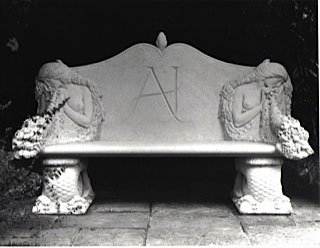
Mermaid Seat
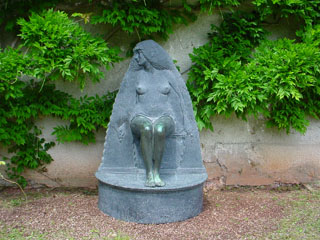
Garden Seat

Carp














